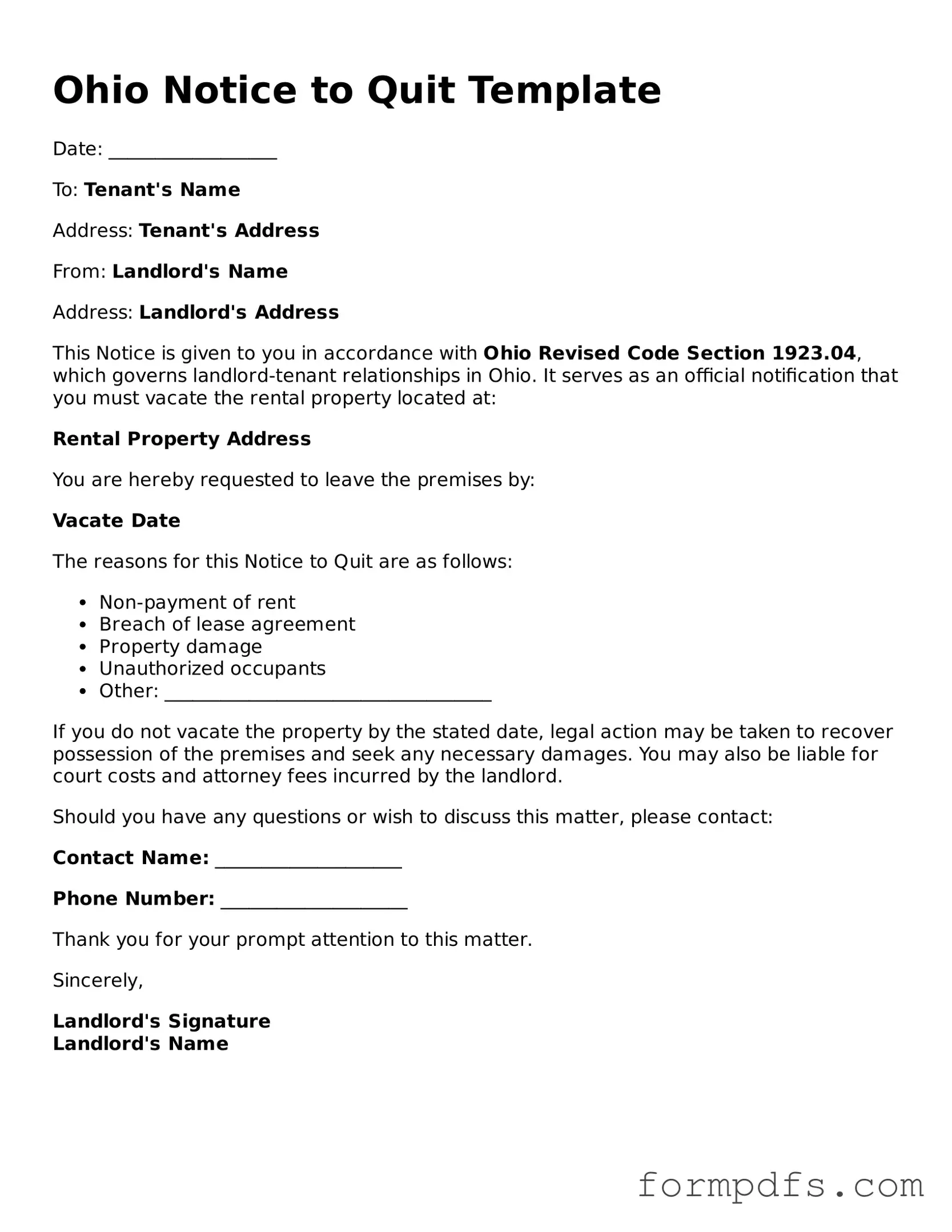What is the Ohio Notice to Quit form?
The Ohio Notice to Quit form is a legal document used by landlords to inform tenants that they must vacate the rental property. This notice is typically issued when a tenant has violated the terms of their lease or rental agreement, such as failing to pay rent or engaging in illegal activities on the premises. The form serves as a formal notification and outlines the reasons for the eviction process.
When should a landlord use the Notice to Quit?
A landlord should use the Notice to Quit when a tenant has breached the lease agreement. Common reasons include non-payment of rent, lease violations, or illegal activities. The notice must be served before the landlord can proceed with legal eviction actions. It is essential to follow the proper procedures to ensure the eviction is lawful.
How long does a tenant have to respond to a Notice to Quit?
The response time can vary based on the reason for the notice. Generally, if the notice is for non-payment of rent, the tenant typically has three days to respond. For other lease violations, the notice may provide a longer period, often ranging from 14 to 30 days. It's crucial for tenants to read the notice carefully to understand the specific timeline they must adhere to.
What information must be included in the Notice to Quit?
The Notice to Quit should include several key pieces of information. This includes the tenant's name, the address of the rental property, the specific reason for the eviction, and the date by which the tenant must vacate. Additionally, it should be signed by the landlord or their representative. Clear and precise language helps prevent misunderstandings.
Can a tenant contest a Notice to Quit?
Yes, a tenant can contest a Notice to Quit. If a tenant believes the notice is unjust or that they have not violated the lease terms, they may respond to the notice and present their case. It is advisable for tenants to seek legal advice to understand their rights and options. If the situation escalates, the tenant may need to defend themselves in court.
What happens if a tenant does not comply with the Notice to Quit?
If a tenant does not comply with the Notice to Quit by the specified deadline, the landlord may initiate eviction proceedings. This typically involves filing a complaint in the local court. The court will then schedule a hearing where both the landlord and tenant can present their sides. If the court rules in favor of the landlord, an eviction order may be issued.
Is the Notice to Quit the same as an eviction notice?
No, a Notice to Quit is not the same as an eviction notice. The Notice to Quit is a preliminary step that informs the tenant of the need to vacate the property. An eviction notice, on the other hand, is issued after the tenant fails to comply with the Notice to Quit and legal proceedings have begun. Understanding this distinction is important for both landlords and tenants.
Are there any specific forms required for the Notice to Quit?
While there is no universally mandated form for the Notice to Quit in Ohio, it is recommended that landlords use a written format that includes all necessary information. Various templates and forms are available online to help landlords ensure they include all required details. Using a well-structured notice can enhance clarity and legal compliance.
Can a tenant receive a Notice to Quit for reasons other than non-payment of rent?
Yes, a tenant can receive a Notice to Quit for various reasons beyond non-payment of rent. These can include lease violations, such as unauthorized pets, property damage, or illegal activities. Each reason must be clearly stated in the notice, and tenants should be aware of their lease terms to avoid potential issues.
